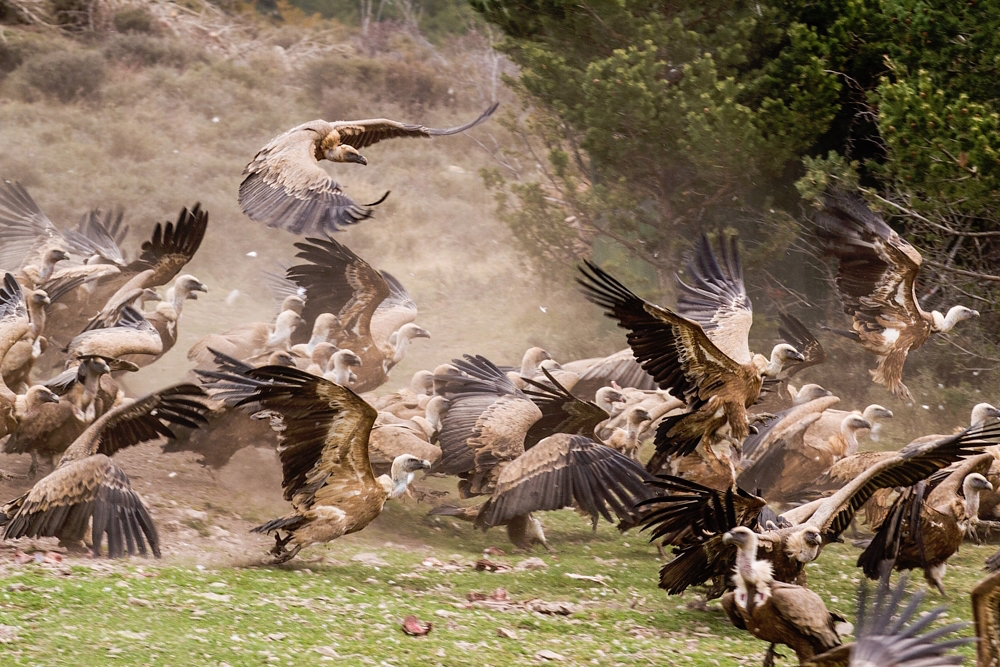Being close to a flock of more than 100 vultures is a moment difficult to forget. Carlos Rio, a Portuguese wildlife photographer, told Wilder the story behind this photo that looks like a painting.
This picture was taken last year in November in Buseu, a little abandoned village that has been recovered by the Buseu Project, a conservation programme for necrophage birds in pre-Pyrenees (Catalonia). There’s a ringing station and a vulture feeding station there.
“All the birds in this photo are griffon vultures (Gyps fulvus). That day the flock would have more than one hundred”, said Carlos Rio.
His goal for that day back in November was to photograph bearded vultures (Gypaetus barbatus) in flight. Carlos Rio wanted to “complete a series of photos for the book I would publish later on, Aves Necrófagas da Península Ibérica” (Necrophage Birds of the Iberia Peninsula).
That would be a perfect spot to achieve that. In that location, says Carlos Rio, “one can also photograph bearded vultures, Egyptian vultures (Neophron percnopterus) and the black vulture (Aegypius monachus). The golden eagle (Aquila chrysaetos) is also a frequent visitor!”
But, as it happened, the huge griffon vultures flock was the first to arrive at the feeding station. “In this photo, I’ve captured the moment when the flock took off, as if startled by some reason I couldn’t identify. A few minutes later the vultures returned to the same spot.”
Carlos Rio is a Portuguese professional wildlife photographer and a birdwatching guide in the Parque Natural do Litoral Norte (Natural Park of the North Coast), in Fão-Esposende region.



